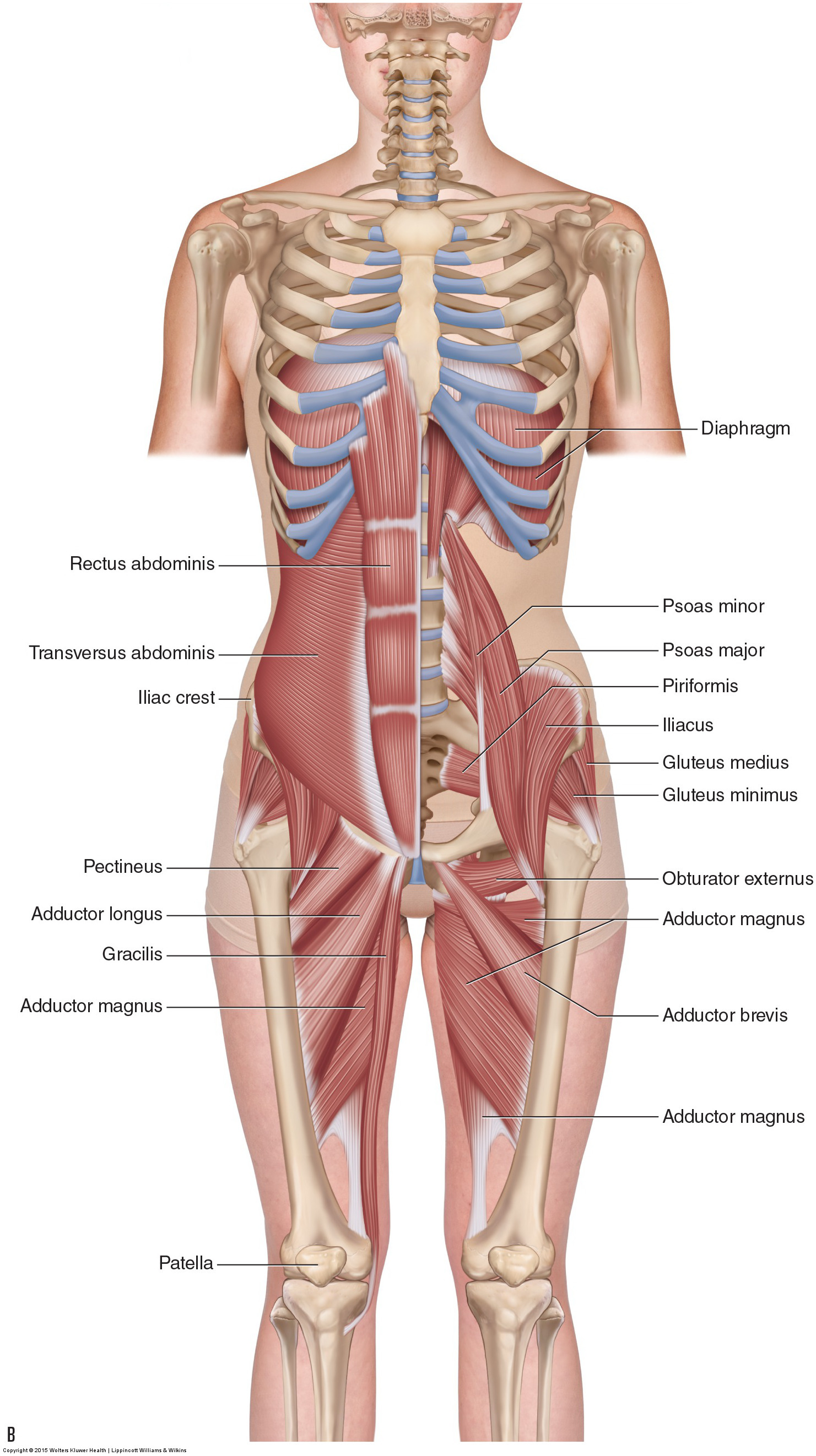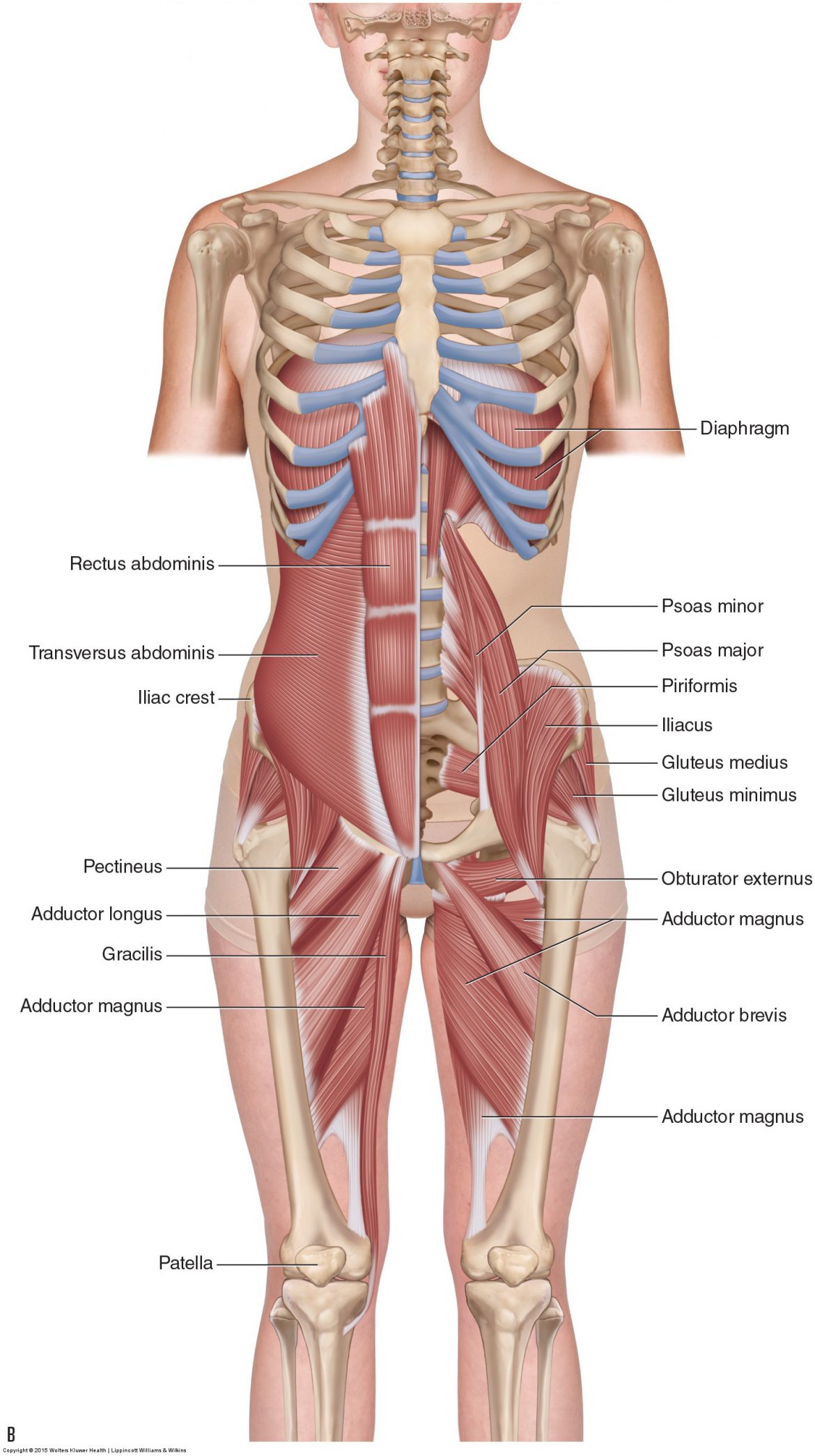Introduction to Adductor Strain:

: Anterior view. The adductor group is composed of the adductors longus, brevis, and magnus, as well as the pectineus and gracilis muscles. Permission: Joseph E. Muscolino. Manual Therapy for the Low Back and Pelvis (2015).
An adductor strain, also known as a groin pull in lay terms, is a strain of the musculature that does adduction of the thigh at the hip joint. A muscle strain is defined as tearing of musculature; therefore a groin pull is a condition in which there is tearing of adductor musculature. There are five muscles in what is called the adductor group. They are the adductor longus, adductor brevis, adductor magnus, pectineus, and gracilis. The adductor group occupies the medial compartment of the thigh, attaching from the pelvic bone proximally to the femur (and tibia in the case of the gracilis) distally. The pectineus and adductor longus are located the most anteriorly, and the adductor magnus is located the most posteriorly.
As the name of the group implies, these muscles all do adduction of the thigh at the hip joint. Because the majority of the fibers of the adductor musculature are located anteriorly, most of them also do flexion of the thigh at the hip joint; only the adductor magnus does extension of the thigh at the hip joint (at least from anatomic position). And the adductor musculature has a weak ability to medially rotate the thigh.
The most common region for an adductor strain is the proximal musculotendinous junction. The adductor longus is the most commonly strained adductor.
Causes:
There are two major causes of a muscle strain. One is stretching (lengthening) the muscle so far that the external tensile force placed upon it tears muscular fibers. The other is contracting the muscle so forcefully that the internal tensile force of the contraction causes tearing of muscular fibers.
A muscle is stretched when it is moved in the direction that is antagonistic, in other words opposite, to its joint actions. Therefore, overstretching and tearing of adductor musculature can occur if the thigh is moved too far into abduction at the hip joint. Moving the thigh too far into extension can also overstretch and tear most of the adductor muscles; and moving the thigh too far into flexion can strain the posteriorly located adductor magnus. The majority of the adductor musculature is most susceptible to a strain if the thigh is moved excessively in the oblique plane direction of abduction with extension.
An overstretching strain of the adductor group most often occurs when playing sports. This is especially true if the tissue is not flexible, and/or if the person is not adequately warmed up before starting play. An overstretching strain can also occur during a traumatic injury, usually a fall in which the person’s thigh splays out into abduction. A strain due to contracting the musculature too forcefully also happens most frequently when playing sports. Given the joint actions of the adductor musculature, a contraction into adduction with some flexion is most likely to result in an adductor strain. The likelihood of a strain is greatly increased if there is an eccentric load placed on the musculature, causing it to be stretched long as it contracts. A common example is kicking the ball when playing soccer and having the kick blocked by another player.


